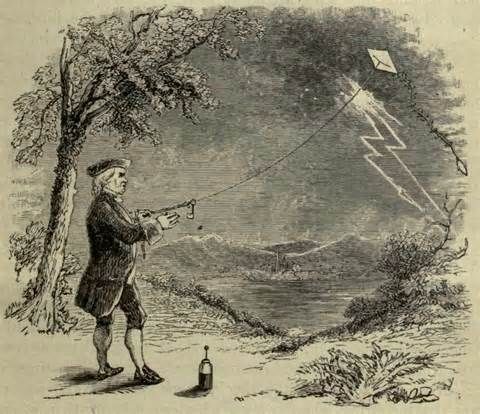

While staying in a nearby shed for shelter from the storm so the portion of string he was holding stayed dry, Franklin attached a house key to the string as well as a Leyden jar. He wrote that with the assistance of his son William, he attached a wet string to a kite. Over the next few years following Dailbard’s successful experiment, Franklin published an article detailing his supposed kite adventure. Exactly one month before Franklin supposedly flew his kite in a thunderstorm, Dailbard used a 40-foot metal rod grounded with wine bottles to extract electricity from a low-lying storm cloud, proving Franklin correct. French physicist Thomas-Francois Dailbard was determined to test Franklin’s theory, and on May 10, 1752, he did just that.

The French Beat Franklin to Itīetween the years 17, when Franklin was tweaking the details of his lightning experiment, he wasn’t aware that his letter to Collinson was inspiring scientists in Paris. Since he couldn't quite figure out a way to get a 30-foot rod high enough into the sky for the experiment to work, in 1752, he came out with a new plan – the kite experiment. His theory was that lightning was caused by electricity and that metal objects may be used to attract it to protect houses and buildings from being struck. Wanting to confirm his suspicion that lightning was a huge spark made up of charged particles, he sent a letter to Collison explaining his idea for an experiment that would pull a lightning bolt through a 30-foot rod. So what parts of the story are true and how did Ben Franklin discover electricity? Ben Franklin’s Kite ExperimentĪround the year 1750, Benjamin Franklin received an electricity tube from the scientist Peter Collison, which sparked his already growing curiosity surrounding charged particles. Like many of these perfectly packaged stories that become more and more polished over the decades, there is much more to the story than what we’ve been told. What is true is that he was definitely not the first scientist to study electricity. Though the details are foggy and this story is based on truth, Ben Franklin was not the first to do this type of experiment, and he may not have even conducted it at all.

Ben Franklin strapped a key to his kite and stood out in the rain waiting for lightning to strike. We all remember the story we were told in school as kids.


 0 kommentar(er)
0 kommentar(er)
